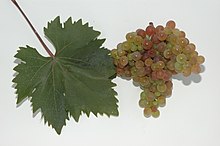
The cuisine of Germany consists of many different local or regional cuisines, reflecting the country's federal history. Germany itself is part of the larger cultural region of Central Europe, sharing many culinary traditions with neighbouring countries such as Poland and the Czech Republic. In Northern Europe, in Denmark more specifically, the traditional Danish cuisine had also been influenced by German cuisine in the past, hence several dishes being common between the two countries.

Sparkling wine is a wine with significant levels of carbon dioxide in it, making it fizzy. While the phrase commonly refers to champagne, European Union countries legally reserve that term for products exclusively produced in the Champagne region of France. Sparkling wine is usually either white or rosé, but there are examples of red sparkling wines such as the Italian Brachetto, Bonarda and Lambrusco, and the Australian sparkling Shiraz. The sweetness of sparkling wine can range from very dry brut styles to sweeter doux varieties.

Riesling is a white grape variety that originated in the Rhine region. Riesling is an aromatic grape variety displaying flowery, almost perfumed, aromas as well as high acidity. It is used to make dry, semi-sweet, sweet, and sparkling white wines. Riesling wines are usually varietally pure and are seldom oaked. As of 2004, Riesling was estimated to be the world's 20th most grown variety at 48,700 hectares, but in terms of importance for quality wines, it is usually included in the "top three" white wine varieties together with Chardonnay and Sauvignon blanc. Riesling is a variety that is highly "terroir-expressive", meaning that the character of Riesling wines is greatly influenced by the wine's place of origin.

Gewürztraminer is an aromatic wine grape variety, used in white wines, and which performs best in cooler climates. In English, it is sometimes referred to colloquially as Gewürz. In English and French it is usually written Gewurztraminer. Gewürztraminer is a variety with a pink to red skin colour, which makes it a "white wine grape" as opposed to the blue to black-skinned varieties commonly referred to as "red wine grapes". The variety has high natural sugar and the wines are white and usually off-dry, with a flamboyant bouquet of lychees. Indeed, Gewürztraminer and lychees share the same aroma compounds. Dry Gewürztraminers may also have aromas of roses, passion fruit and floral notes. It is not uncommon to notice some spritz.

Grüner VeltlinerGerman:[ˈɡʁyːnɐfɛltˈliːnɐ] ) is a white wine grape variety grown primarily in Austria, Hungary, Slovakia, and the Czech Republic. The leaves of the grape vine are five-lobed with bunches that are long but compact, and deep green grapes that ripen in mid-late October in the Northern Hemisphere.
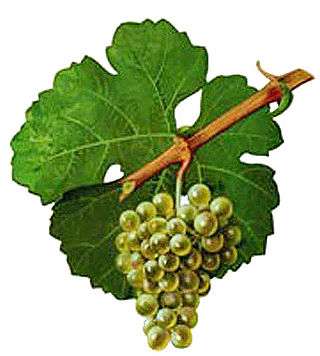
Sylvaner or Silvaner is a variety of white wine grape grown primarily in Alsace and Germany, where its official name is Grüner Silvaner. While the Alsatian versions have primarily been considered simpler wines, it was included among the varieties that can be used to produce Alsace Grand Cru wine in 2006, together with the four 'noble grapes' of Alsace, although only in one vineyard, Zotzenberg.
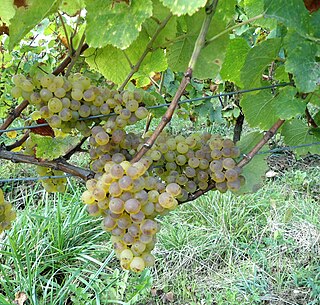
Savagnin or Savagnin blanc is a variety of white wine grape with green-skinned berries. It is mostly grown in the Jura region of France, where it is made into Savagnin wine or the famous vin jaune and vin de paille.
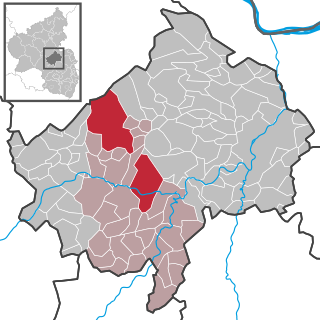
Bad Sobernheim is a town in the Bad Kreuznach district in Rhineland-Palatinate, Germany. It belongs to the like-named Verbandsgemeinde, and is also its seat. It is a state-recognized spa town, and is well known for two fossil discovery sites and for the naturopath Emanuel Felke. Bad Sobernheim is also a winegrowing town.
The glossary of wine terms lists the definitions of many general terms used within the wine industry. For terms specific to viticulture, winemaking, grape varieties, and wine tasting, see the topic specific list in the "See also" section below.
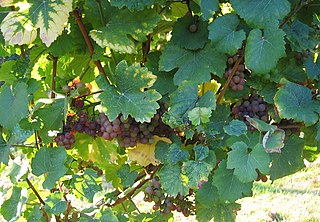
Savagnin rose or Roter Traminer is a variety of wine grape. It has a pink, reddish or brownish red skin colour, but is counted as a white wine grape since it does not have the deep purple/blue/black colour of red wine grapes.

Austrian wines are mostly dry white wines, though some sweeter white wines are also produced. About 30% of the wines are red, made from Blaufränkisch, Pinot noir and locally bred varieties such as Zweigelt. Four thousand years of winemaking history counted for little after the "antifreeze scandal" of 1985, when it was revealed that some wine brokers had been adulterating their wines with diethylene glycol. The scandal destroyed the market for Austrian wine and compelled Austria to tackle low standards of bulk wine production, and reposition itself as a producer of quality wines. The country is also home to Riedel, makers of some of the most expensive wine glasses in the world. Some of the best producers of Austria include Weingut Bründlmayer, Weingut F.X. Pichler and Weingut Franz Hirtzberger, Weingut Hutter, Weingut Eigl and Wellanschitz.
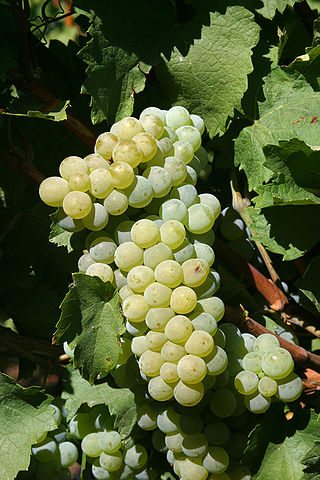
Elbling is a variety of white grape which today is primarily grown in the upstream parts of the Mosel region in Germany and in Luxembourg, where the river is called Moselle. The variety has a long history, and used to cover much of Germany's vineyards from medieval times and was that country's most cultivated variety until the early 20th century, but has been in decline ever since. As of 2006, there were 583 hectares of Elbling vineyards in Germany, which made it the country's 23rd most grown variety of grape. Of that vineyard surface, 575 ha or 98.6% was found in the Mosel region In the same year, there were 122.9 hectares of Elbling grown in Luxembourg.

Zierfandler is a grape variety used to make white wine in the Thermenregion of Austria. It is also known as Spätrot because it turns red just before harvest time. It is traditionally blended with Rotgipfler but is increasingly being sold as a varietal wine. Zierfandler wines are typically elegant and quite sweet, but with much balancing acidity and a nutty bouquet of pistachios and almonds. They are capable of ageing well.
Dinka or Kövidinka is a white Hungarian wine grape. There is also significant plantings near the Hungarian border in Slovenia, Croatia and Serbia.
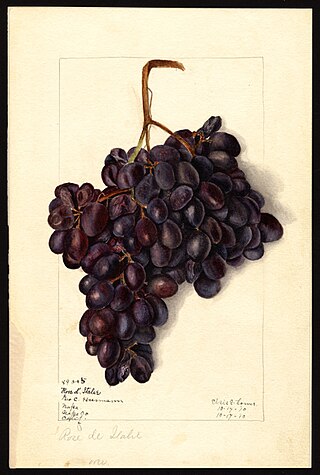
Frühroter Veltliner is a variety of early-ripening, red-skinned white wine grape grown primarily in the Weinviertel district of Lower Austria. It accounts for 0.9% of total Austrian vineyards and is diminishing.
Domaene Lilienfeld - Lilienfelderhof - is one of the oldest wine estates in Central Europe. Situated in Pfaffstätten, 30 km south of Vienna, Austria, it traces its history to an endowment made by the Babenberger Leopold VI, Duke of Austria to the Cistercian monks at Lilienfeld Abbey in 1202, though the buildings as such are traditionally dated to 1209. In 2006 Domaene Lilienfeld (Lilienfelderhof) was acquired by the Hildebrand Private Foundation, on the basis of a 99-year leasehold (Baurecht). The foundation is currently in the process of restoring and revitalising both the numerous buildings and 20 hectares of vineyards.
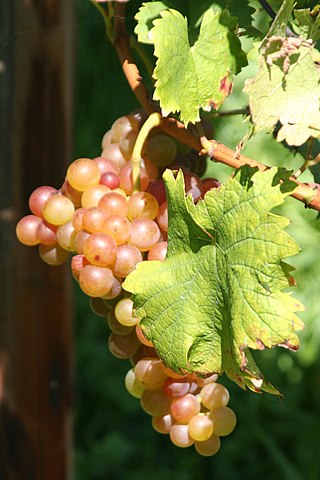
Muscat Rouge à Petits Grains is a wine grape for white wine that is a member of the Muscat family of Vitis vinifera. Its name comes from its characteristic small berry size and tight clusters, and from its skin colour. It's a variation of the more common Muscat Blanc à Petits Grains with a reddish colour, which in some of its synonyms are described as brown, gray or violet. Muscat Rose à Petits Grains is a further variation with lighter, pinkish skin colour.
